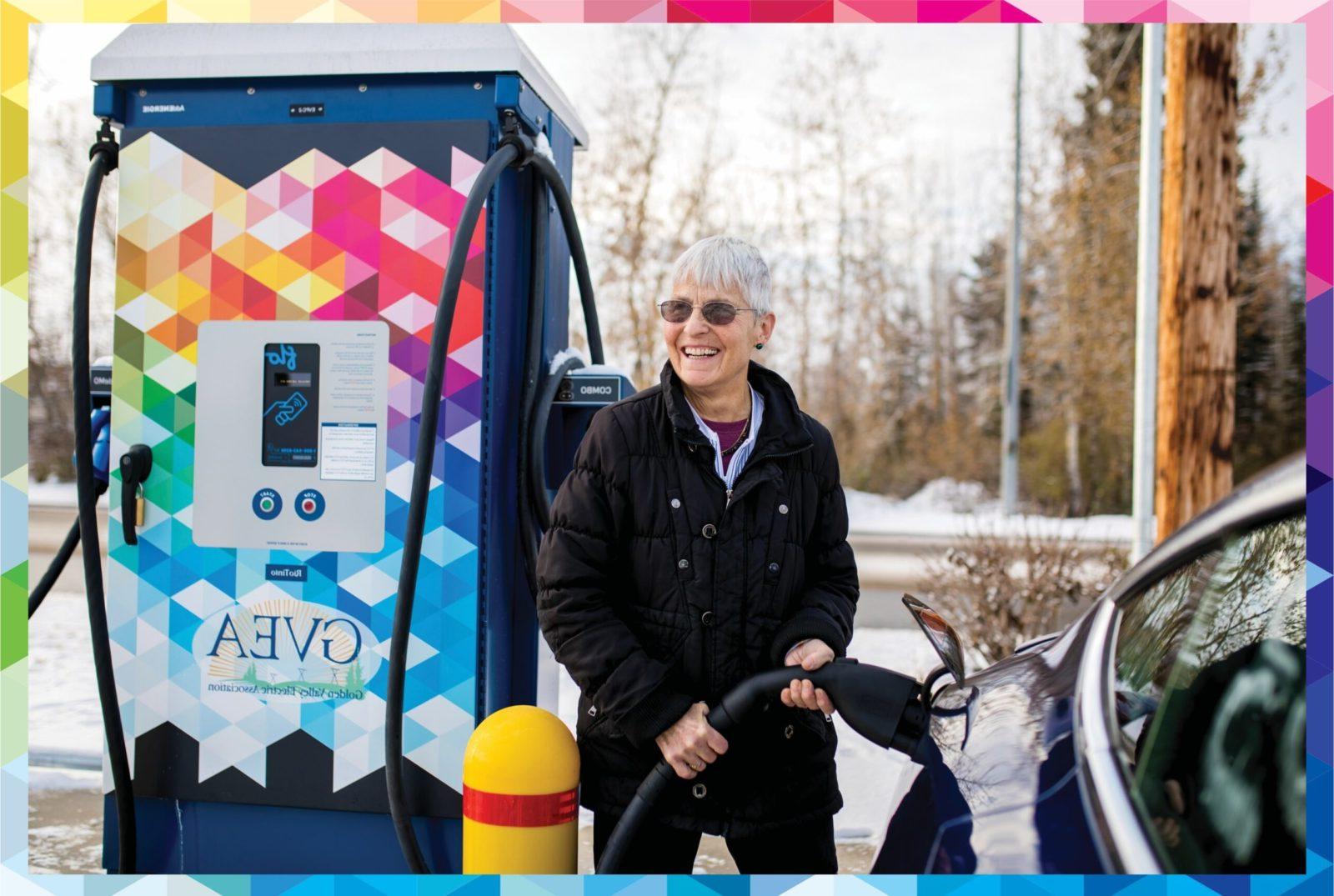
Recently, Golden Valley Electric Association (GVEA) celebrated the installation of two electric vehicle direct current (EV DC) fast chargers at GVEA’s Fairbanks campus.
GVEA’s EV DC fast chargers are the northernmost fast chargers in the United States, and the first installed in Fairbanks. We want to share some details about this emerging technology:
Why is GVEA installing EV chargers?
- Widespread adoption of EVs is one-step forward in GVEA’s efforts to lower carbon emissions and improve Interior air quality through PM2.5 reduction.
- Interestingly, 50 years ago, GVEA brought the first EV, a 1971 AMC Hornet, to the Interior for testing.
Are EV’s beneficial to GVEA membership as a whole?
- A vehicle powered by electricity instead of fossil fuels creates fewer emissions.
- EV’s create more demand for electricity, which helps spread the fixed costs of our utility across greater sales, creating the potential for lower electric rates for all members.
Are GVEA’s chargers open to the public?
- Yes, the chargers are open for public use and the status of the chargers can be checked at: www.plugshare.com/location/345503
- To use the stations, users register at www.flo.com and once registered, can pay either with the FLO app or a credit card. All Payments are processed by FLO; GVEA is not involved with the payment process.
How much does it cost to use GVEA’s EV DC fast chargers?
- Currently 20 cents per minute which is comparable to GVEA’s general service rate.
- The cost for charging an EV using GVEA’s fast chargers is approximately 40% less, measured on a per miles basis, than the fuel cost for internal combustion vehicles.
How long does it take to charge at these chargers?
- Most EVs will come to GVEA looking to top off their charge (50% or less) and will need about 20-40 minutes to fully charge.
How far can EVs travel?
- The travel range for an EV varies dramatically depending on the particular vehicle model and weather conditions. The winter travel range for all EV’s is typically much less compared to summer ranges.
- The current longest range for commercially available EVs is 397 miles (Mercedes EQS 450+). However, the average range in Alaska is 166 miles.
Are there other EV charging stations in the Interior?
- Yes. The website www.plugshare.com is a good resource for details on charging locations and capacity.
- GVEA also provided a grant to establish EV charger facilities in Cantwell to further support our carbon reduction efforts. The status of these chargers can be checked at: www.plugshare.com/location/330268
What are the next steps for GVEA?
- Continued involvement in the Railbelt EV working group.
- Focus on facilitating installation of additional chargers in the Interior.
Do EVs function in Alaska?
- Yes – depending on the make and model of the EV and the severity of winter weather conditions. Electric vehicles are still an evolving technology and as the EV market continues to expand and adapt to consumer demands it is very likely that we will see improvements in cold weather efficiencies.
Are EVs right for me?
- Every situation is different, and each person should evaluate EVs based on their individual needs, risk tolerance, economics and personal priorities when making the decision whether or not to purchase an EV. Considerations should include, amongst other issues, the cost of operation, the range (summer and winter) of the EV, environmental benefits, and your individual risk tolerance with adopting new technology.
Is there enough electricity generated in the Interior to power EVs?
- Yes. GVEA’s nine generation sources (using oil, coal, natural gas, wind, solar and hydro) can generate 381.5 megawatts of power. The system peak record of 223 megawatts was set in December 2007.
- GVEA’s generation costs are mostly fixed, the only additional cost for generating more electricity is fuel. In most instances, generating a larger load of electricity is more efficient.
As EVs are adopted in Interior Alaska, will there need to be upgrades to infrastructure?
- No. GVEA’s infrastructure can handle the additional load. If all light duty vehicles in the Interior were EVs that charged at home, the additional load would raise the average residential consumption from 608 kWh/month to about 745 kWh/month, approximately equal to the 754 kWh/month that was used in 1999. The reduction in residential consumption from 754 kWh/month in 1999 to the current 608 kWh/month is due to improvements in energy efficiency, including more efficient lighting and appliances.
